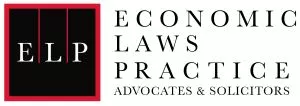The Securities and Exchange Board of India ("SEBI") has prepared a standardised reporting format for Investment Advisers. Henceforth, Investment Advisers need to submit reports for half-yearly periods ending on September 30 and March 31 of every financial year. SEBI has issued a circular dated May 7, 2024 ("SEBI Circular") addressed to Investment Advisers in which the periodic reporting format is enclosed as Annexure I of the SEBI Circular. The SEBI Circular directs the Investment Advisers Administration and Supervisory Body1 ("IAASB") to make necessary arrangements for obtaining periodic reports from Investment Advisers and to issue a circular to Investment Advisers in this regard, within 30 (thirty) days from the date of issuance of the SEBI Circular.
For the half-yearly period which ended on March 31, 2024, Investment Advisers should submit the periodic report to IAASB within a period of 15 (fifteen) days after IAASB issues a circular as directed by the SEBI Circular. For the subsequent half-yearly periods, Investment Advisers should submit the half-yearly report to IAASB within 7 (seven) working days from the end of the relevant half-yearly period.
ELP Comments
- The reporting format calls for some basic details, such as registered name, SEBI registration number, date of birth or date of incorporation, registered office address, correspondence office address etc. Is it really necessary to fill these details into every report that is filed with SEBI? As per Regulation 13(b) of the SEBI IA Regulations, if there is any material change in the information already submitted to SEBI, the investment adviser is required to forthwith inform SEBI in writing. If there is any change in control of the Investment Adviser, Regulation 15(11) requires the Investment Adviser to obtain SEBI's prior approval. In other words, most of the information in Annexure 1 is already available with SEBI.
- The reporting format also calls for information such as the Investment Adviser's official Website Address and "Details of Social Media handles as an Investment Adviser". Currently, information such as this is not collected at the time of registration as an Investment Adviser. Presumably, this will help SEBI monitor Investment Advisers. Also, if any Social Media handle is not disclosed in a half-yearly report, it would be a violation and can be penalised. However, once a website or Social Media handle has been reported, wouldn't it be a better idea if in subsequent reports, Investment Advisers need to report about these only if there is a change? It would make monitoring easier if only changes in such details need to be reported. If SEBI wants Investment Advisers to report this information every six months, SEBI should consider inserting a tick-box asking if the information has changed since the last report.
- The new reporting format calls for detailed information regarding the number of clients, Assets under Advice (AUA) and fees charged for the relevant half year period. It is likely that many Investment Advisers will find such detailed reporting to be intrusive, but it cannot be denied that it would enable SEBI monitor Investment Advisers better. Vide a circular dated September 23, 2020, SEBI has prescribed that Investment Advisers cannot charge a flat fee exceeding Rs. 1,25,000 per annum or, the fee is AUA based, not more than 2.5% of the AUA.
- In Row No 6 of the third table of the Annexure (which deals only with fees and AUA), Investment Advisers need to report how much fee has been "charged" during the relevant period. The third sub-row to this row requires the Investment Adviser to report the total fee "collected" for Accredited Investors. There is a distinction between fees charged and fees collected since not all clients pay up on time. It would be helpful if the information sought by SEBI is made uniform and is either fees charged or fees collected.
- The second table of the Annexure (which deals only with complaints against the Investment Adviser) appears to be the most relevant of all the information that is sought to be collected and covers complaints received through SCORES and complaints received through other sources.
The SEBI Circular is available here.
The content of this article is intended to provide a general guide to the subject matter. Specialist advice should be sought about your specific circumstances.



